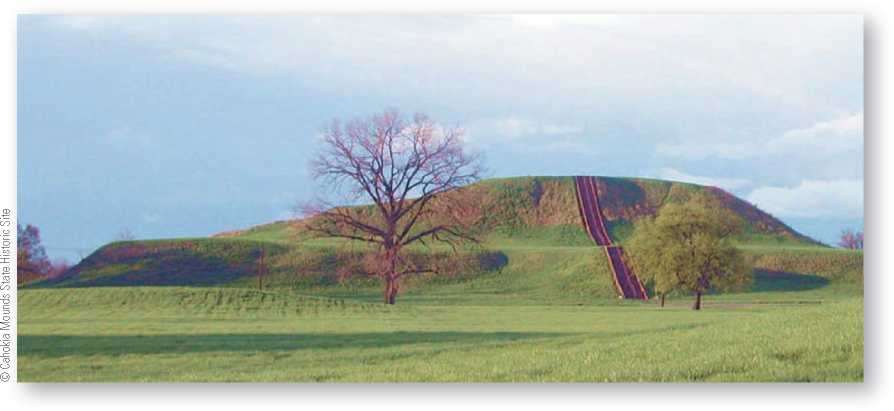From Africa to China to the South American Andes, ancient civilizations are almost always associated with magnificent palaces built high aboveground—with sculptures beautifully rendered using techniques that continue into the present and with vast, awe-inspiring engineering projects. These impressive accomplishments could indicate that civilization is better than other cultural forms, particularly when these societies came to dominate peoples with other social systems. But domination is more a reflection of aggression, size, and power than it is cultural superiority. In other words, the emergence of centralized governments, characteristic of civilizations, has allowed some cultures to dominate others and for civilizations to flourish. Anthropologists have proposed several theories to account for the transition from small, egalitarian farming villages to large urban centers in which population density, social inequality, and diversity of labor required a centralized government.
When Neolithic peoples realized that the best farming occurred in the fertile soils of river valleys, provided that they could control the periodic flooding.205 The centralized effort to control the irrigation process blossomed into the first governing body, elite social class, and civilization.
Another theory suggests that in regions of ecological diversity, trade is necessary to procure scarce resources. In Mexico, for example, trade networks distributed chil-ies grown in the highlands, cotton and beans from intermediate elevations, and salt from the coasts to people throughout the region. Some form of centralized authority developed to organize trade for the procurement of these commodities and to redistribute them.
A third theory developed by anthropologist Robert Carneiro suggests that states develop where populations are hemmed in by such environmental barriers as mountains, deserts, seas, or other human populations as an outcome of warfare and conflict in these circumscribed regions.206 207 As these populations grow, they have no space
Ecological approaches emphasize the role of the environment in the development of states. Among these, the irrigation or hydraulic theory holds that civilizations developed
Hydraulic theory The theory that explains civilization’s emergence as the result of the construction of elaborate irrigation systems, the functioning of which required full-time managers whose control blossomed into the first governing body and elite social class.
Anthropology Applied

Tell It to the Marines: Teaching Troops about Cultural Heritage
By Jane C. Waldbaum
The need to protect ancient sites, museums, and antiquities in war-torn Iraq and Afghanistan has led the Archaeological Institute of America (AIA) to begin an innovative program to help educate troops soon to be sent to those countries. Conceived by AIA vice president C. Brian Rose, the program sends experienced lecturers to military bases to teach the basics of Middle Eastern archaeology and the importance of protecting the evidence of past cultures. The class, taken by both officers and enlisted men and women, is mandatory.
The effort is a supplement to the AIA's longstanding, nationwide lecture program in which scholars in archaeology and related fields present the latest research and developments to more than 102 local societies in the United States and Canada. The lectures for the troops focus specifically on the areas where military personnel will be deployed and on the specific sites, monuments,
Museums, and artifacts that they might be called upon to protect.
The current lectures, funded in part by the Packard Humanities Institute, emphasize Mesopotamia's role in the development of writing, schools, libraries, law codes, calendars, and astronomy, as well as connections with familiar biblical figures such as Abraham and Daniel and ancient sites such as Ur and Babylon. Afghanistan's position as a crossroads of ancient civilizations and the route of Alexander the Great through the region is discussed. Troops also learn about basic archaeological techniques, the importance of preserving context, the necessity of working with archaeologists and conservators, and the most effective ways to protect sites against looters.
The first series of lectures was given at the Marine Corps base at Camp Leje-une, North Carolina, and there are plans to expand the program to other bases and services in the near future. "Many of the officers have M. A. degrees; some are reservists and high-school history teachers,” says Rose, who delivered the inaugural lectures last spring. "They care a great deal about the history of the areas in which they serve; some of them have actually lived in or near Babylon on earlier tours of duty. All of us have been struck by their thirst for knowledge during and after our lectures.”
Many have helped get this program up and running, including U. S. Marine Colonel Matthew Bogdanos, who was instrumental in securing the return of many antiquities stolen from the Iraq Museum. "When it comes to clearing a building, neutralizing a land mine, or making a neighborhood safe for children, we know what to do,” says Bogdanos. "When it comes to protecting a country's cultural heritage, we are just as eager to do the right thing—we just don't always know the best way to do it. This is where Brian Rose's groundbreaking program will pay dividends for generations.”
In which to expand, and so they begin to compete for increasingly scarce resources. Internally, this may result in the development of social stratification, in which an elite controls important resources to which lower classes have limited access. Externally, this leads to warfare and even conquest, which, to be successful, require elaborate organization under a centralized authority. As this chapter’s Anthropology Applied feature shows, in times of war centralized authorities such as the U. S. military are drawing upon archaeological expertise to protect cultural resources.
Problems exist with each of these ecological theories. Across the globe and through time, cultures can be found that do not fit these models. For example, some of the earliest large-scale irrigation systems developed in highland New Guinea, where strong centralized governments never emerged. North American Indians possessed trade networks that extended from Labrador in northeastern Canada to the Gulf of Mexico and the Yellowstone region of the Rocky Mountains and even to the Pacific—all without centralized control.207 And in many of the cultures that do not fit the theories of ecological determinism, neighboring cultures learned to coexist rather than pursuing warfare to the point of complete conquest.
Although few anthropologists would deny the importance of the human-environment relationship, many are dissatisfied with approaches that do not take into account human beliefs and values.208 For example, as described in the case study of Tikal—while religion was tied to the earth in that the priests determined the most favorable time for planting crops—the beliefs and power relations that developed within Maya culture were not environmentally determined. Human societies past and present bring their beliefs and values into their interactions with the environment.
One criticism of the above theories is that they fail to recognize the capacity of aggressive, charismatic leaders to shape the course of human history. Accordingly, anthropologists Joyce Marcus and Kent Flannery have
14 Haviland, W. A., & Power, M. W. (1994). The original Vermonters (2nd ed., chs. 3 & 4). Hanover, NH: University Press of New England.

The relative dearth of ancient monumental structures in North America has led some to assume the superiority of European civilization, rather than to acknowledge the successful nomadic cultural pattern of many North American Indian groups. Cities were present in precontact North America. Take for example Cahokia, located in Southern Illinois, a city with an estimated population of 40,000 people dating from 650 to 1400 ce. Ca-hokia's pyramid-shaped ceremonial mounds spanned an area larger than the great pyramids of Egypt. Until 1800, when Philadelphia surpassed it, Cahokia was the largest city in the land that is now the United States.
Developed what they call action theory.16 This theory acknowledges the relationship of society to the environment in shaping social and cultural behavior, but it also recognizes that forceful leaders strive to advance their positions through self-serving actions. In so doing, they may create change.
In the case of Maya history, for example, local leaders, who once relied on personal charisma for the economic and political support needed to sustain them in their positions, may have seized upon religion to solidify their power. Through religion they developed an ideology that endowed them and their descendants with supernatural ancestry and gave them privileged access to the gods, on which their followers depended. In this case, certain individuals could monopolize power and emerge as divine kings, using their power to subjugate any rivals.
As the above example makes clear, the context in which a forceful leader operates is critical. In the case of the Maya, the combination of existing cultural and ecological factors opened the way to the emergence of political dynasties. Thus explanations of civilization’s emergence are likely to involve multiple causes, rather than just one. Furthermore, we may also have the cultural equivalent of what biologists call convergence, where similar societies come about in different ways. Consequently, a theory that accounts for the rise of civilization in one place may not account for its rise in another.




 World History
World History









